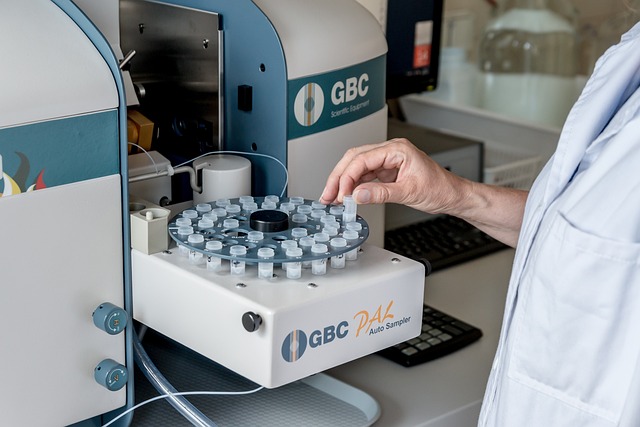Asbestos testing in San Antonio's public buildings, mandatory due to hazardous material prevalence, involves a meticulous process starting with visual inspections and sampling using specialized tools. Samples are analyzed in accredited labs using advanced techniques like X-ray fluorescence (XRF) or transmission electron microscopy (TEM). Costs vary based on building age, condition, and extent of asbestos-containing materials (ACMs), with older structures requiring comprehensive assessments. Thorough testing is crucial for legal protection and preventing expensive future remediation efforts.
“In San Antonio, TX, understanding asbestos risks in public buildings is paramount due to stringent regulations. This article delves into comprehensive asbestos testing evaluations, exploring crucial aspects such as risk assessment, advanced testing methods, and cost analysis. With a focus on the local context, we examine the financial implications of asbestos testing in the public sector, providing insights for informed decision-making. Discover the essential steps towards ensuring safer, compliant public spaces while considering the cost of asbestos testing in San Antonio, TX.”
- Understanding Asbestos in Public Buildings: Risks and Regulations in San Antonio, TX
- The Process of Asbestos Testing: Methods and Protocols for Comprehensive Evaluations
- Cost Analysis: Uncovering the Financial Implications of Asbestos Testing in San Antonio's Public Sector
Understanding Asbestos in Public Buildings: Risks and Regulations in San Antonio, TX

Asbestos is a hazardous material that was commonly used in construction, especially in public buildings built before the 1980s. In San Antonio, TX, like many cities across the United States, public health and safety regulations have been implemented to mitigate the risks associated with asbestos exposure. The presence of asbestos in schools, government offices, and other public spaces can pose significant risks to building occupants, maintenance staff, and contractors.
Regular asbestos testing is crucial to ensure compliance with local, state, and federal regulations. In San Antonio, property owners and managers are responsible for identifying and managing asbestos-containing materials (ACM). The cost of asbestos testing in San Antonio, TX, varies based on the size and complexity of the building, but it’s a necessary investment to protect the health and safety of individuals who use and maintain these public spaces. Effective management includes proper handling, containment, and, when necessary, removal by licensed professionals to minimize risks and avoid costly legal and health complications.
The Process of Asbestos Testing: Methods and Protocols for Comprehensive Evaluations

Asbestos testing in public buildings involves a meticulous process designed to ensure safety and compliance with regulations, especially considering the cost of asbestos testing in San Antonio TX. It begins with an initial visual inspection where trained professionals examine the building for any visible signs or materials that might contain asbestos. This step is crucial as it helps identify potential hazards and guides the subsequent sampling procedure. During a comprehensive evaluation, samples are collected from various surfaces such as flooring, insulation, ceiling tiles, and piping using specialized tools to ensure accurate representation of the building’s materials.
The samples are then sent to accredited laboratories for analysis using advanced techniques like X-ray fluorescence (XRF) or transmission electron microscopy (TEM). These methods allow for precise identification and quantification of asbestos fibers within the material. The results are interpreted against established safety standards to determine whether immediate remediation is required, thus facilitating informed decision-making regarding the management and cost of asbestos removal in San Antonio TX buildings.
Cost Analysis: Uncovering the Financial Implications of Asbestos Testing in San Antonio's Public Sector

In San Antonio, Texas, the cost of asbestos testing in public buildings is a significant consideration for local authorities and facilities managers. The process involves specialized professionals who utilize advanced techniques to identify and assess potential asbestos hazards within structures. These tests are crucial for ensuring the safety of occupants and workers, as well as complying with environmental regulations. The financial implications can vary widely depending on several factors, such as the age and condition of the building, the extent of asbestos-containing materials (ACMs), and the complexity of the testing process.
For older public buildings, which may have been constructed before the 1980s when asbestos use was more prevalent, comprehensive assessments are often required. This can include floor tiles, insulation, roofing, and even pipe wrappings, all of which could contain asbestos. The cost of sampling, analyzing, and documenting these materials can add up, particularly if multiple samples need to be taken and sent to certified laboratories for detailed analysis. However, investing in thorough asbestos testing is essential to mitigate legal risks and avoid costly remediation efforts in the future.
Asbestos testing in public buildings is a critical step towards ensuring safety and compliance with regulations in San Antonio, TX. By understanding the risks associated with asbestos and employing comprehensive evaluation methods, building managers can effectively navigate the process. The cost analysis highlights the financial considerations, making it essential for the public sector to prioritize these evaluations. Investing in asbestos testing not only mitigates health risks but also demonstrates a commitment to maintaining high-quality, safe public spaces in San Antonio.
